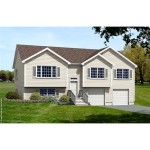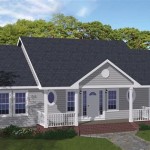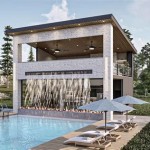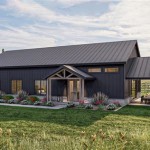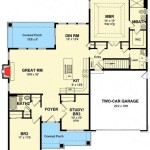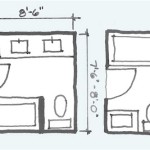Decorating an Open Floor Plan Living Room: Maximizing Space and Style
Open floor plans have become increasingly popular in modern architecture, prized for their ability to create a sense of spaciousness and connectivity. However, decorating an open floor plan living room presents unique challenges compared to traditional room layouts. The absence of defined walls requires careful consideration of furniture placement, color palettes, and overall flow to achieve a cohesive and functional living space. This article provides an in-depth exploration of key strategies for successfully decorating an open floor plan living room, ensuring a harmonious blend of style and practicality.
Defining Zones within the Open Space
One of the primary challenges in an open floor plan is the lack of natural divisions between different areas. The key to overcoming this is to strategically define zones within the space using various design elements. This creates distinct areas for different activities, such as lounging, dining, or working, without sacrificing the open and airy feel that defines the layout.
Furniture Arrangement: The placement of furniture is crucial for defining zones. Large pieces, such as sofas and sectional sofas, can act as visual barriers. Positioning the back of a sofa to face the dining area, for example, implicitly separates the living room zone from the dining space. Similarly, a strategically placed console table or bookcase can serve as a subtle divider. Avoid pushing all furniture against the walls, as this can make the space feel less inviting and less defined. Instead, float furniture to create conversational groupings and establish clear boundaries.
Rugs: Area rugs are another effective tool for defining zones. A large rug placed under the seating area in the living room visually anchors the space and separates it from the surrounding areas. Different rugs can be used to delineate different zones, creating visual distinction through color, pattern, or texture. For example, a plush rug might define the living room, while a more durable, patterned rug might define the dining area.
Lighting: Lighting plays a significant role in creating distinct zones. Layered lighting, using a combination of ambient, task, and accent lighting, can highlight different areas and their functions. Overhead lighting can provide general illumination, while task lighting, such as floor lamps and table lamps, can be used to illuminate specific areas for reading or working. Accent lighting, such as spotlights or wall sconces, can be used to highlight artwork or architectural features, adding visual interest and further defining zones.
Using Architectural Features: Existing architectural features, such as columns or changes in ceiling height, can naturally delineate zones within the open floor plan. Capitalize on these features to enhance the sense of separation. For example, a column can be used as a natural divider between the living room and dining area. A change in ceiling height can visually separate the kitchen from the living area. Employing complementary design elements, such as paint colors or flooring materials, can further accentuate these natural divisions.
Creating a Cohesive Design Aesthetic
While defining zones is important, maintaining a cohesive design aesthetic throughout the open floor plan is equally crucial. A unified color palette, consistent furniture styles, and a shared design theme will ensure that the different zones feel connected and harmonious, rather than disparate and disjointed.
Color Palette: Establishing a consistent color palette is fundamental to creating a cohesive design. Choose a limited number of colors, typically three to five, and use them throughout the open floor plan. These colors can be used in varying shades and intensities to create visual interest and depth. Neutral colors can be used as a base, with accent colors added through accessories, artwork, and accent furniture. Maintaining consistency in the color palette will tie the different zones together and create a sense of flow.
Furniture Styles: While the furniture in each zone can serve distinct functions, maintaining a consistent style will contribute to the overall cohesion of the space. Choose furniture pieces that share similar design elements, such as materials, shapes, or finishes. For example, if the living room features modern furniture with clean lines and metal accents, the dining area should also incorporate similar design elements. Avoid mixing drastically different styles, as this can create a sense of visual discord.
Flooring: Flooring is a key element that ties the entire open floor plan together. Using the same flooring material throughout the space will create a seamless transition between zones. Alternatively, different flooring materials can be used to define zones, but they should be complementary in color and style. For example, hardwood flooring in the living room can be paired with tile flooring in the kitchen, with a smooth transition between the two materials. The consistent use of area rugs can also help to unify the flooring and further define zones.
Accessories and Artwork: Accessories and artwork are essential for adding personality and visual interest to the open floor plan. Choose accessories and artwork that complement the overall design aesthetic and color palette. Group accessories together to create visual impact and avoid clutter. Consider using large-scale artwork to make a statement and draw the eye. Artwork can also be used to reinforce the color palette and tie the different zones together. Maintaining a consistent style in accessories and artwork will contribute to the overall cohesion of the space.
Maximizing Natural Light and Views
Open floor plans are often designed to maximize natural light and views, and the decorating scheme should complement these features. Strategically placing furniture and using appropriate window treatments can enhance the natural light and views, creating a bright and inviting living space.
Furniture Placement: When arranging furniture, prioritize access to natural light and views. Avoid blocking windows with large pieces of furniture. Instead, position furniture to take advantage of the natural light, allowing it to illuminate the entire open floor plan. Consider placing seating areas near windows to create a comfortable and inviting space for relaxing and enjoying the view.
Window Treatments: Choose window treatments that allow natural light to filter into the space while providing privacy and controlling glare. Sheer curtains or blinds can be used to diffuse sunlight and create a soft, warm ambiance. Blackout curtains can be used in areas where privacy is desired or where the sun is particularly intense. The style and color of the window treatments should complement the overall design aesthetic and color palette of the open floor plan.
Mirrors: Mirrors are an excellent tool for reflecting and amplifying natural light. Strategically placing mirrors can brighten up dark corners and create the illusion of more space. A large mirror placed on a wall opposite a window will reflect the natural light and visually expand the room. Mirrors can also be used to highlight architectural features or artwork, adding visual interest and depth.
Color and Reflectivity: The color scheme of the open floor plan can significantly impact the amount of natural light. Light, airy colors reflect more light than dark colors, creating a brighter and more spacious feel. Using paint with a slightly reflective sheen can also help to amplify natural light. Similarly, choosing furniture and accessories with reflective surfaces, such as glass or metal, can contribute to the overall brightness of the space.
Decorating an open floor plan living room requires a thoughtful and strategic approach. By carefully defining zones, creating a cohesive design aesthetic, and maximizing natural light and views, it is possible to transform a large, undefined space into a functional and stylish living environment. The principles outlined above provide a framework for successfully navigating the challenges of decorating an open floor plan, resulting in a harmonious and inviting space that reflects individual style and preferences.

How To Decorate Your Open Floor Plan Like A Pro Interior Design Home Staging Jacksonville Fl Interiors Revitalized

30 Gorgeous Open Floor Plan Ideas How To Design Concept Spaces

How To Decorate Your Open Floor Plan Christopher Companies

18 Great Room Ideas Open Floor Plan Decorating Tips

How Do You Decorate A Large Open Floor Plan Houseplans Blog Com
:strip_icc()/open-floor-plan-design-ideas-13-proem-studio-white-oak-3-57715775317c4b2abc88a4cefa6f06b7.jpeg?strip=all)
22 Open Floor Plan Decorating Ideas Straight From Designers

Open Floor Plan Traditional Living Room Jillian Klaff Homes Elegant Design Quality Furniture

A Few Of Our Favorite Decorating Tips For Open Floor Plans Janet Brooks Design

How To Decorate An Open Floor Plan Living Room Az Big Media

Decorating An Open Concept Room Round Top


